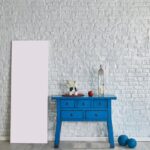Home decor fabrics are a crucial element in interior design, adding color, texture, and style to our living spaces. However, without proper protection, these fabrics can easily succumb to moisture and stains, leading to deterioration and a shorter lifespan. In this article, we will explore the key steps on how to waterproof home decor fabric to ensure its durability and longevity.
By waterproofing home decor fabric, you not only shield it from water damage but also safeguard it against spills, stains, and other potential hazards. This process creates a protective barrier that repels liquids and prevents them from seeping into the fabric fibers. Whether you have upholstery, curtains, or decorative pillows, waterproofing is essential for maintaining the integrity of your home decor items.
Understanding the different types of home decor fabrics is crucial when considering waterproofing options. From natural fibers like cotton and linen to synthetic materials such as polyester and microfiber, each fabric type has its own characteristics that influence how it responds to waterproofing treatments. By choosing the right method tailored to your specific fabric type, you can ensure optimal results and long-lasting protection for your beloved home decor pieces.
Understanding Home Decor Fabric
Home decor fabrics come in a variety of materials, each with its unique properties and considerations when it comes to waterproofing. One common type of fabric used in home decor is cotton, known for its softness and breathability. However, cotton is also highly absorbent, making it prone to water damage if not properly waterproofed.
Polyester is another popular choice for home decor fabric due to its durability and resistance to wrinkles. When waterproofing polyester fabrics, it is essential to ensure that the product used does not affect the fabric’s texture or color.
Another type of home decor fabric to consider is linen, which offers a luxurious look and feel to any space. Linen can be more challenging to waterproof due to its natural fibers, which can be damaged by certain waterproofing methods. Velvet is a plush and elegant fabric commonly used for upholstery and drapery. When waterproofing velvet, it is crucial to choose a method that will not flatten the pile or alter the fabric’s appearance.
When deciding how to waterproof home decor fabric, it is essential to take into account the specific characteristics of each type of fabric. Some fabrics may require a gentle spray-on waterproofing treatment, while others may benefit from a more heavy-duty sealant or coating. Understanding the properties of different home decor fabrics will help you choose the right waterproofing method that will protect your fabrics without compromising their look and feel.
| Home Decor Fabric Type | Waterproofing Considerations |
|---|---|
| Cotton | Absorbent; prone to water damage |
| Polyester | Durable; resistant to wrinkles |
| Linen | Natural fibers; challenging to waterproof |
| Velvet | Plush; elegant; requires careful treatment |
Choosing the Right Waterproofing Method
When it comes to waterproofing home decor fabric, choosing the right method is crucial to ensure the best results. There are several options available, each with its own benefits and considerations. Below is a comparison of various methods of waterproofing, including sprays, sealants, and coatings, along with their effectiveness on different types of fabrics:
- Sprays: Waterproofing sprays are a popular choice for their ease of use and versatility. They can be applied to a wide range of fabrics, including cotton, polyester, and nylon. These sprays create a protective barrier on the fabric’s surface, repelling water and preventing stains. However, they may need to be reapplied more frequently than other methods.
- Sealants: Sealants are another effective option for waterproofing home decor fabric. They often come in liquid form and can be brushed or sprayed onto the fabric. Sealants penetrate the fabric fibers to create a durable waterproof barrier from within. This method is particularly suitable for heavier fabrics like canvas or upholstery material.
- Coatings: Waterproof coatings are designed to provide long-lasting protection for outdoor fabrics exposed to harsh weather conditions. These coatings are typically applied using a brush or roller and form a flexible membrane over the fabric that repels water effectively. While coatings may require more effort during application, they offer superior waterproofing performance for items like outdoor cushions or patio furniture.
Consider the type of fabric you will be waterproofing and the intended use of the item when choosing a waterproofing method. Some methods may be better suited for specific fabrics or applications than others. Additionally, always follow the manufacturer’s instructions carefully when applying any waterproofing product to ensure optimal results.
Remember that proper preparation and application are key when waterproofing home decor fabric to ensure maximum effectiveness. Take time to research and select the appropriate method based on your needs before diving into the process of protecting your beloved textiles from water damage. With the right choice of waterproofing method, you can enjoy your beautifully decorated space worry-free from spills and splashes.
Preparing the Fabric
When it comes to waterproofing home decor fabric, proper preparation is key to ensuring the best results. Before applying any waterproofing product, it is crucial to clean and prep the fabric thoroughly to remove any dirt, stains, or residues that may hinder the effectiveness of the treatment. By following a few simple steps, you can make sure that your fabric is ready to be waterproofed for long-lasting protection.
Step 1: Identify Fabric Type
First and foremost, it’s important to identify the type of fabric you are working with since different materials may require specific cleaning techniques. Whether you are dealing with cotton, linen, polyester, or a blend of fabrics, understanding the nature of your fabric will help determine the best cleaning method to use.
Step 2: Conduct a Spot Test
Before you proceed with cleaning the entire fabric piece, it’s advisable to conduct a spot test on a small, inconspicuous area. This will help ensure that the cleaning solution you plan to use does not cause any damage or discoloration to the fabric. Choose a hidden corner or seam and apply a small amount of the cleaning solution before proceeding with full-scale cleaning.
Step 3: Remove Stains and Dirt
Using a gentle detergent or cleaner specifically designed for home decor fabrics, spot-clean any visible stains or dirt on the surface. Gently scrub the affected areas with a soft brush or cloth in circular motions. Avoid using harsh chemicals or abrasive tools that may damage the fabric fibers.
By following these steps and taking care to properly clean and prep your home decor fabric before waterproofing it, you can ensure that the waterproofing treatment adheres effectively and provides long-lasting protection against moisture and stains. Proper preparation is essential for achieving optimal results when waterproofing your favorite home decor pieces.
Applying the Waterproofing Product
Choosing the Right Waterproofing Product
Before applying any waterproofing product to your home decor fabric, it is crucial to select the right one for your specific fabric type. Different fabrics require different types of waterproofing methods, so be sure to choose a product that is compatible with the material you are working with.
Sprays are ideal for fabrics that have a looser weave, while sealants or coatings may work better on tightly woven fabrics. Read the manufacturer’s instructions carefully and test the product on a small, inconspicuous area of the fabric to ensure compatibility before proceeding.
Application Process
- Start by working in a well-ventilated area and laying your fabric flat on a clean surface.
- Shake the waterproofing product well to ensure proper mixing of ingredients.
- Hold the spray can or applicator about 6-8 inches away from the fabric and apply an even layer of waterproofing solution in smooth, sweeping motions.
- Be sure to cover the entire surface of the fabric, including any seams or edges, to ensure thorough coverage.
- Allow the first coat to dry completely before applying additional coats as needed for added protection.
Drying and Testing
Once you have applied the waterproofing product to your home decor fabric, allow it to dry completely according to the manufacturer’s recommendations. This may involve air drying or using a dryer on low heat settings.
To test the effectiveness of the waterproofing, sprinkle some water onto the fabric surface – if it beads up and rolls off without soaking in, then your waterproofing was successful. If water begins to absorb into the fabric, you may need to apply another coat or try a different waterproofing method for better results.
By following these steps and tips for applying waterproofing products to your home decor fabrics, you can ensure that your items are protected from moisture and spills while maintaining their original look and feel for years to come.
Testing the Waterproofing
Waterproofing home decor fabric is a crucial step in ensuring that your furniture and decorative items remain protected from spills, stains, and moisture. However, simply applying a waterproofing product is not enough; it is essential to test the effectiveness of the treatment to guarantee that the fabric has been properly sealed. By following these testing guidelines, you can be confident that your home decor fabrics are fully waterproofed.
To test the waterproofing effectiveness of your fabric after application, you can perform a simple water droplet test. Start by sprinkling a few drops of water onto the fabric’s surface and observe how it behaves. If the water beads up and rolls off without being absorbed into the fabric, it indicates that the waterproofing treatment has been successful. However, if the water is absorbed or seeps through the fabric, it suggests that additional layers of waterproofing may be needed.
Another effective way to test the waterproofing of your home decor fabric is by conducting a longer exposure test. Place a damp cloth or paper towel on top of the treated fabric for an extended period, such as 30 minutes to an hour. Afterward, remove the cloth and check if any moisture has seeped through to the other side of the fabric.
If the underside remains dry, it signifies that the waterproofing treatment has effectively prevented water penetration. These simple yet practical tests will help you determine whether your home decor fabric is adequately waterproofed and ready to withstand everyday use and potential spills.
| Waterproof Fabric Test Methods | Results |
|---|---|
| Water Droplet Test | Successful if water beads up and rolls off; additional layers needed if water is absorbed. |
| Long Exposure Test | Effective if underside remains dry after placing damp cloth; inadequate if moisture seeps through. |
By regularly testing the waterproofing effectiveness of your home decor fabrics using these methods, you can ensure that they maintain their protective properties over time. Keep in mind that reapplication of a waterproofing product may be necessary after prolonged use or cleaning to maintain optimal protection against liquids and stains. Following these testing guidelines will help you preserve the quality and longevity of your cherished home decor items for years to come.
Caring for Waterproofed Fabrics
When it comes to maintaining the longevity of your waterproofed home decor fabrics, proper care and maintenance are key. By following some simple guidelines, you can ensure that your fabrics remain waterproof and looking great for years to come. Here are some tips on how to properly care for and maintain waterproofed home decor fabrics:
- Regular Cleaning: Regularly cleaning your waterproofed fabrics is essential to prevent dirt, dust, and grime from building up on the surface. Vacuuming or light brushing can help remove surface debris without damaging the fabric.
- Spot Cleaning: In case of spills or stains, it is important to address them promptly. Use a gentle cleaner that is safe for the specific type of fabric you have, and blot the stain rather than rubbing it to avoid spreading.
- Storage: When not in use, store your waterproofed fabrics in a cool, dry place away from direct sunlight. Avoid storing them in damp or humid conditions as this can lead to mold and mildew growth.
In addition to regular cleaning and storage practices, there are also other maintenance techniques you can use to prolong the lifespan of your waterproofed home decor fabrics:
- Reapply Waterproofing: Over time, the waterproofing treatment on your fabric may wear off due to exposure to elements such as sunlight and moisture. To maintain its water-resistant properties, consider reapplying a protective spray or coating every year or as needed.
- Avoid Harsh Chemicals: When cleaning your waterproofed fabrics, be mindful of using harsh chemicals or abrasive cleaners that can strip away the protective coating. Instead, opt for gentle cleaners specifically designed for use on treated fabrics.
- Air Dry: Whenever possible, allow your waterproofed fabrics to air dry naturally after cleaning rather than using a dryer. Heat from dryers can break down the waterproofing treatment over time, reducing its effectiveness.
By incorporating these care and maintenance tips into your routine, you can help ensure that your waterproofed home decor fabrics continue looking great and performing well for years to come.
Troubleshooting Common Issues
Waterproofing home decor fabric is an essential step to ensure its durability and longevity, especially when it comes to protecting it from spills, stains, and moisture. Understanding the different types of home decor fabrics and their properties is crucial when considering how to waterproof them effectively. Choosing the right waterproofing method can make a significant difference in the overall effectiveness of the process.
When it comes to troubleshooting common issues that may arise when waterproofing home decor fabrics, there are a few key problems to address. Uneven coverage can occur if the waterproofing product is not applied evenly or if there are areas on the fabric that are missed during the application process. One solution to this issue is to reapply the waterproofing product in those specific areas and ensure a more even coverage.
Discoloration is another common problem that may occur when waterproofing home decor fabrics. This can be caused by certain types of waterproofing products reacting with the fabric or not being compatible with its color or material. To prevent discoloration, it is important to test a small area of the fabric with the chosen waterproofing product before applying it extensively. Additionally, choosing a clear or colorless waterproofing product can help avoid any potential color changes on your home decor fabric.
In conclusion, knowing how to properly waterproof home decor fabric is essential for preserving its quality and appearance over time. By understanding the different types of fabrics, choosing the right method of waterproofing, preparing and applying the product correctly, testing its effectiveness, and caring for it properly afterwards, you can ensure that your home decor remains protected and looking its best for years to come.
Remember to address any common issues like uneven coverage or discoloration promptly with appropriate solutions for a successful water-resistant finish on your favorite fabrics.
Frequently Asked Questions
How Do You Permanently Waterproof Fabric?
Permanently waterproofing fabric involves using a waterproofing spray or solution that penetrates the fibers and forms a protective barrier against water. This process typically requires washing and thoroughly drying the fabric before applying the waterproofing product to ensure effectiveness.
Can You Treat Fabric to Make It Waterproof?
Yes, fabric can be treated to become waterproof by using various methods such as applying waterproofing sprays, coatings, or sealants designed specifically for fabrics. These treatments work by creating a barrier on the fabric surface that repels water while still maintaining breathability.
How Do You Protect Fabric From Water?
There are several ways to protect fabric from water damage, including using waterproofing sprays or treatments, seam sealers for stitching holes, and storing items in water-resistant containers. Additionally, choosing fabrics with inherent water-repellent properties can also help prevent moisture absorption and damage. Regular maintenance like reapplying waterproofing treatments as needed can ensure continued protection against water.

I’m thrilled to be your companion on this exciting journey through the world of home decor and design. With a passion for turning houses into homes and a keen eye for the finer details, I’m here to help you transform your living spaces into beautiful, functional, and meaningful havens.





